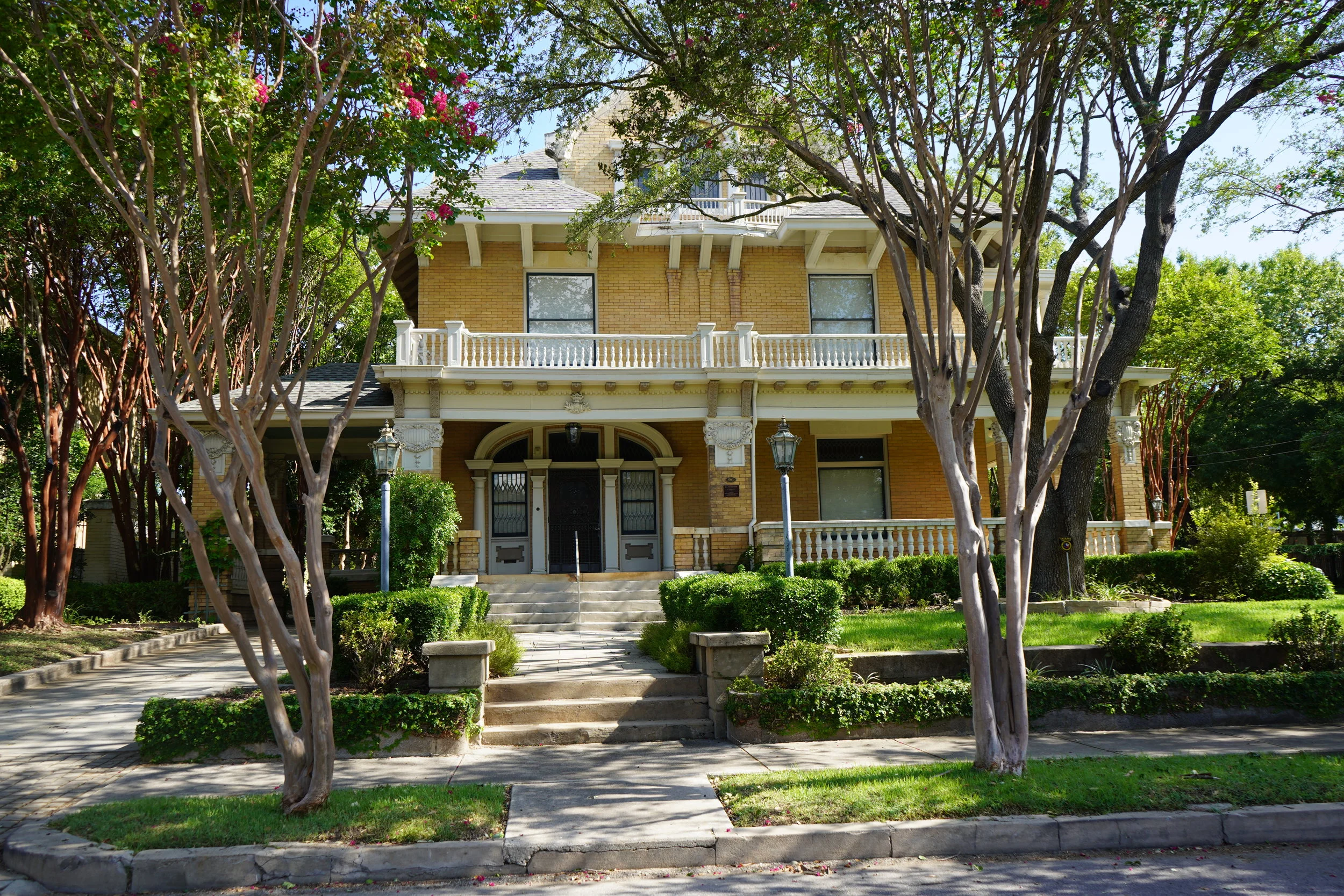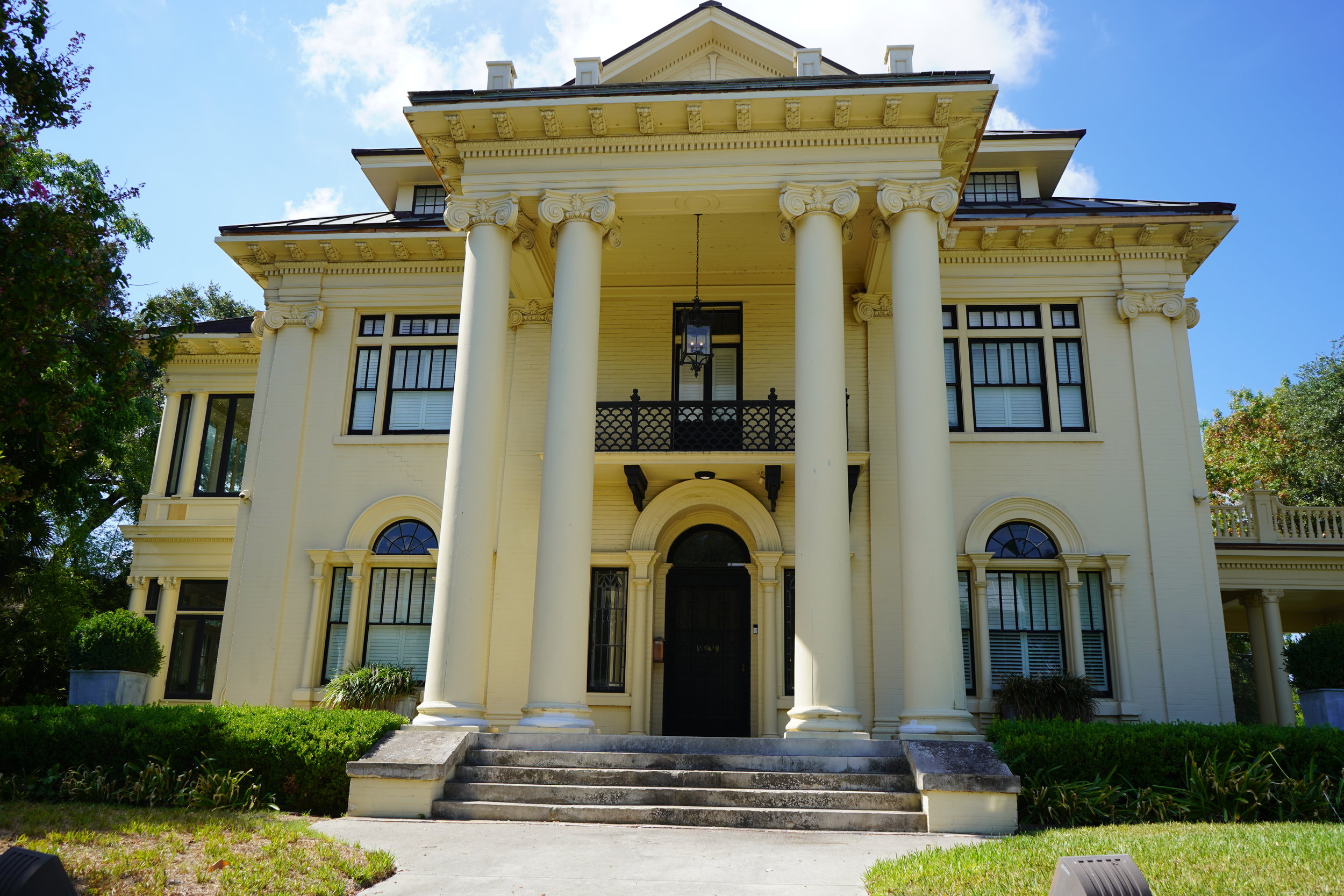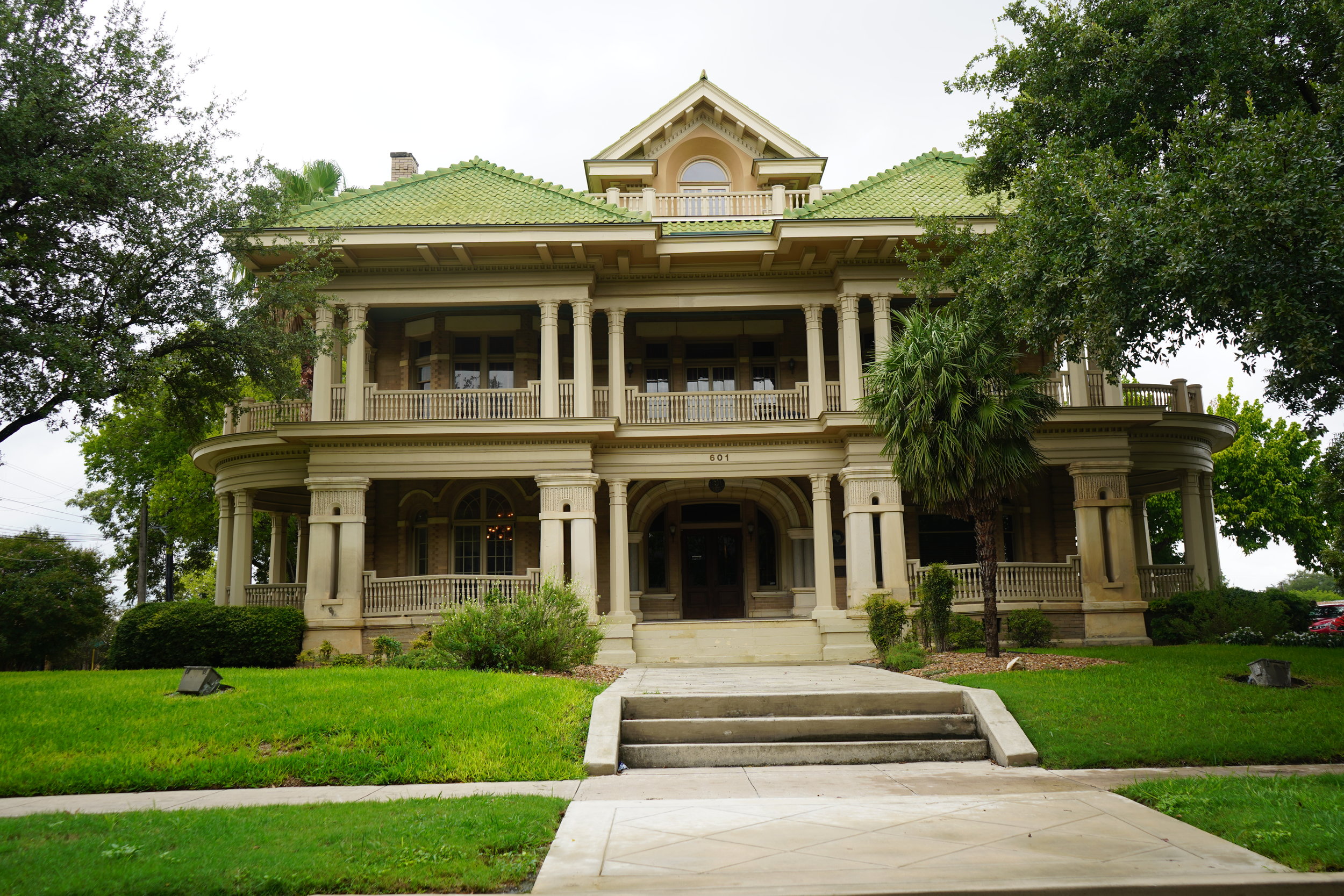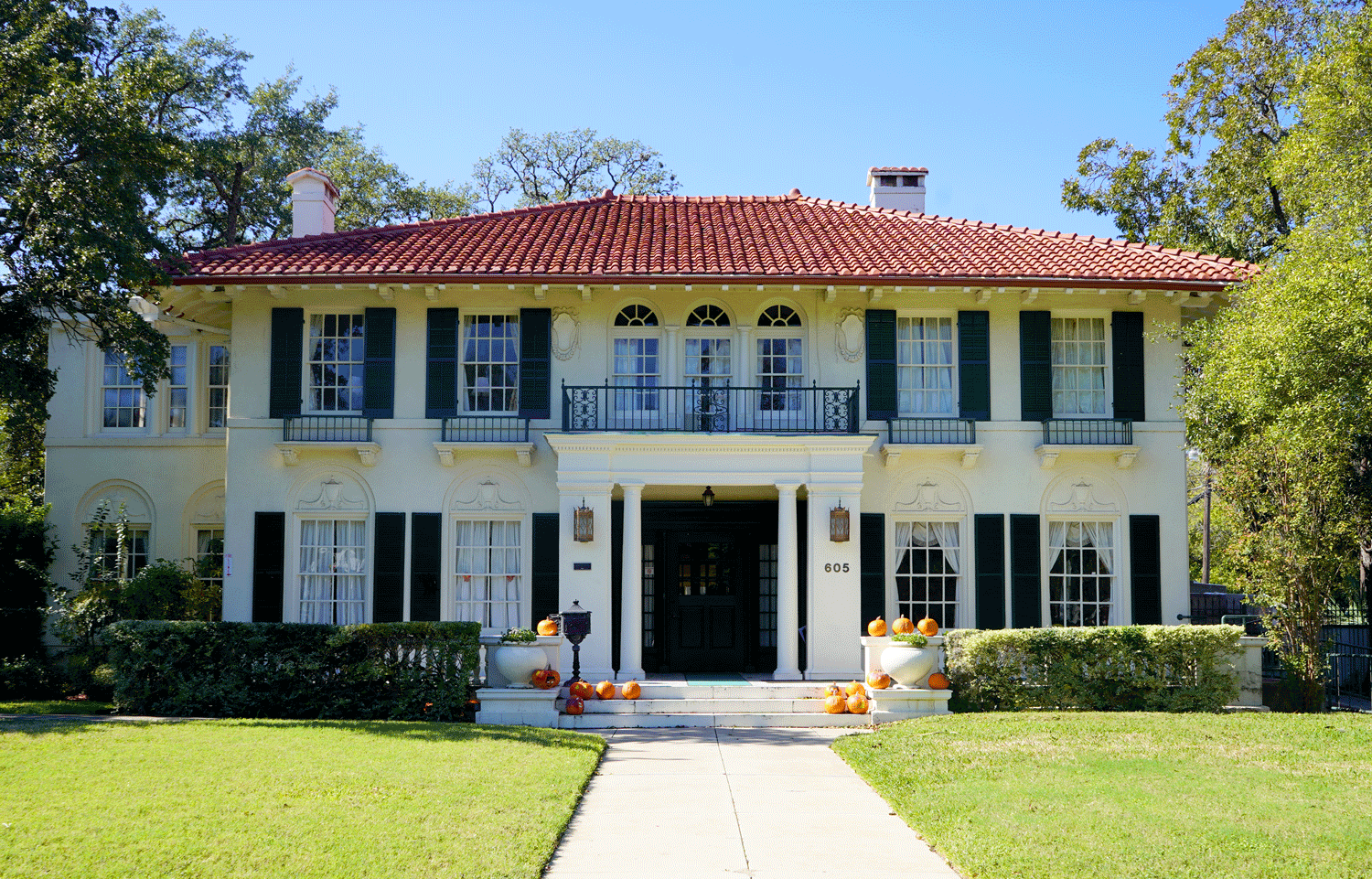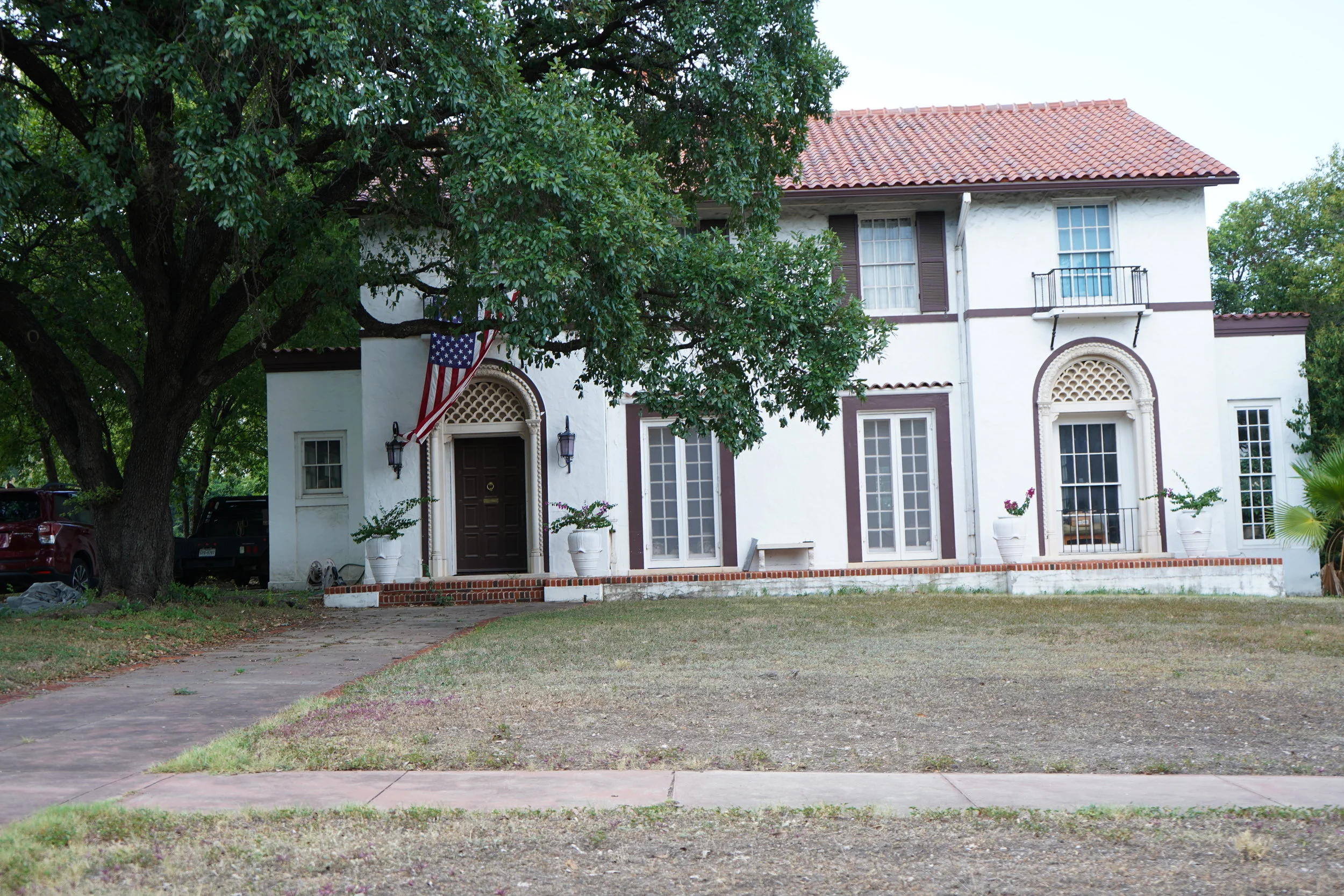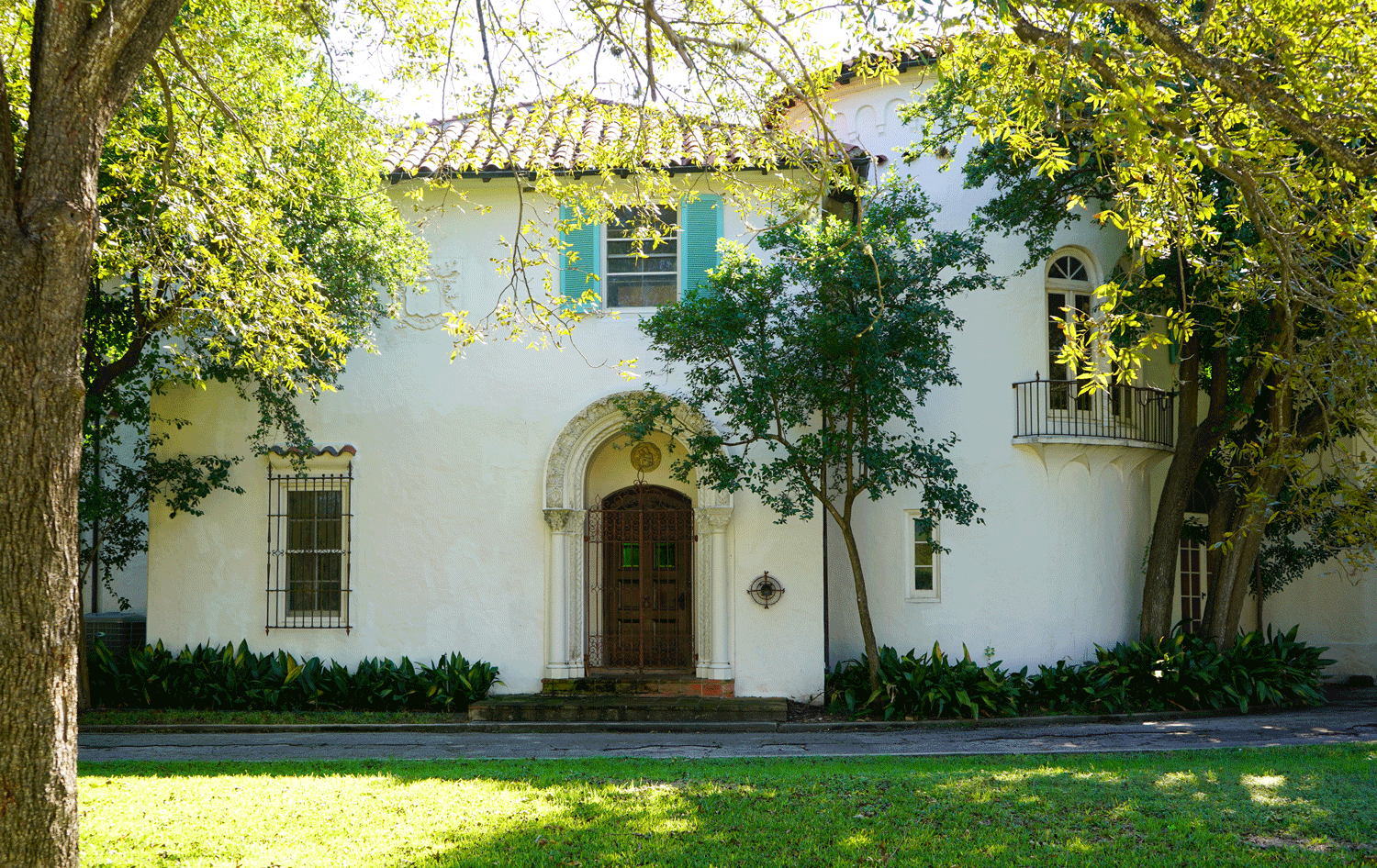1873 — 1969
In 1924 Ayres formed a partnership with his son, Robert M. Ayres. During the 1920s and 1930s Atlee B. and Robert M. Ayres, as the firm was called, designed numerous residences in the Spanish Colonial Revival style, among them the Hogg house (1924), the Mannen house (1926), the Newton house (1927), and the Atkinson house (1928, now the Marion Koogler McNay Art Museum). The firm was also adept in using other revival modes, including the Colonial Revival of the H. Lutcher Brown residence (1936) and the English Tudor of the Jesse Oppenheimer residence (1924).
In 1915 Ayres was state architect of Texas, a position that allowed him to design the Blind Institute (now the Texas School for the Blind), the Texas State Office Building, and other important public buildings. On the University of Texas campus he designed Carothers Dormitory and the original Pharmacy Building. He drew plans for courthouses in Kingsville, Alice, Refugio, Del Rio, and Brownsville. In San Antonio his firm helped design the exterior of the Municipal Auditorium (1923) and the Administration Building at Randolph Air Force Base (1931), known as the "Taj Mahal," with a tower that conceals a 500,000-gallon water tank. It also designed the thirty-story Smith-Young Tower (1929), the Plaza Hotel (1927), and the Federal Reserve Bank Building (1928) and remodeled the Menger Hotel (1949–53).(Texas State Historical Association)
The Homes
421 Howard St
Material: Brick
Style: Neoclassical House
515 Belknap
Material: Buff Brick
Style: Beaux Arts House
501 W French Pl
Material: Buff Brick
Style: Beaux Arts House
238 W Craig
Material: Brick
Style: Neoclassical House
Address: 105 Madison Ave
Material: Buff Brick
Style: Neoclassical House
601 Howard St
Material: Buff Brick
Style: Beaux Arts House
Address: 117 W Mistletoe Ave
Material: Wood
Style: Craftsman Bungalow
145 E Agarita Ave
Material: Stucco
Style: Italian Renaissance House
300 W French
Material: Brick
Style: Beaux Arts Chateau
108 W Kings Highway
Material:
Style: Tudor House
605 Belknap
Material: Stucco
Style: Italian Renaissance House
201 Belknap Place
Material: Stucco/Stone
Style: Tudor House
Address: 302 W Mulberry Ave
Material: Buff Brick
Style: Italian Renaissance House
129 E Summit
Material: Stucco
Style: Italian Renaissance Revival House
Address: 315 W Lynwood Ave
Material: Stucco
Style: Italian Renaissance House
501 Elizabeth Rd
Material: Stucco
Style: Italian Renaissance Cottage
215 Bushnell
Material: Stucco
Style: Spanish Revival House
323 Bushnell
Material: Stucco, Wood
Style: Spanish Revival House
202 Bushnell
Material: Stucco
Style: Italian Renaissance House
Address: 810 E Olmos Drive
Material:
Style:
Address: 800E Olmos Dr
Material: Stucco
Style: Eclectic, Spanish Revival
Address: 207 Laurel Heights Pl
Material: Stucco
Style: Spanish Revival House
Address: 6000 N New Braunfels Ave
Material: Stucco
Style: Spanish Revival House
Address: 138 Oakmont Ct
Material: Stone
Style: Eclectic, Italian Renaissance
Address: 636 Ivy Lane
Material: Stone
Style: Neoclassical House



